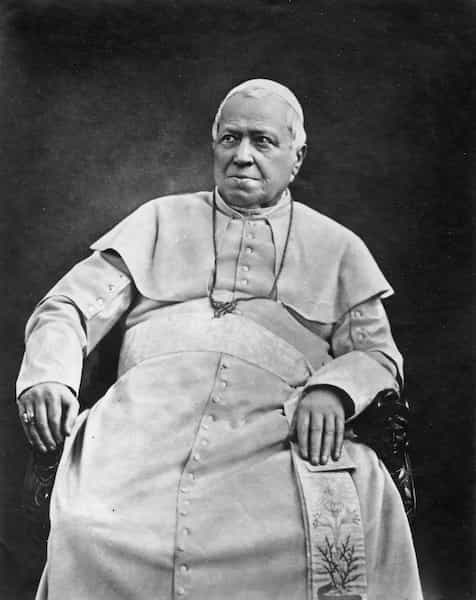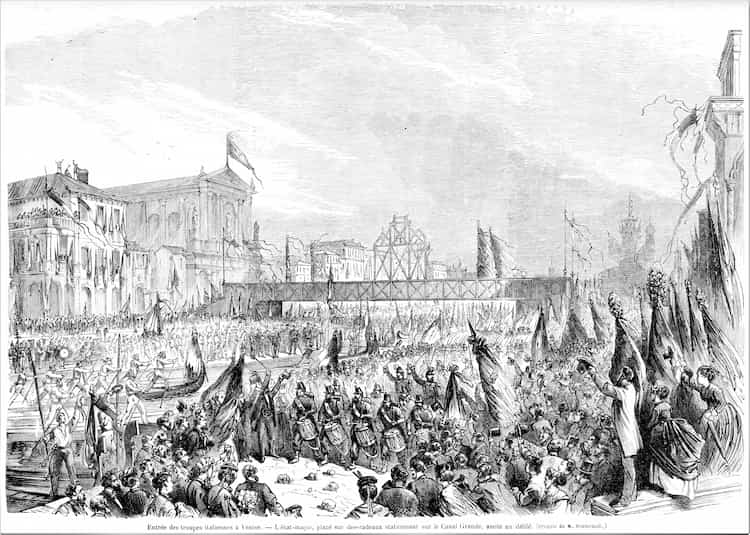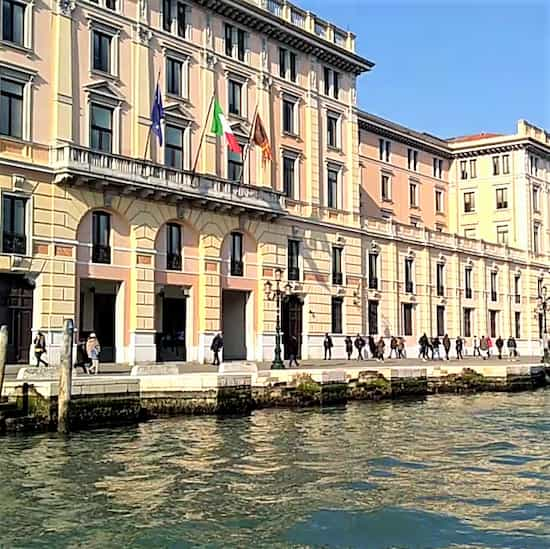
Venice Train Station – Jump to the practical information.
Venezia – Santa Lucia. An overview.

- The first railway bridge to Venice was completed in 1846 after the bridge immediately had been equipped with double tracks. The first train rolled from Mestre to Venice on January 4, and from Venice on January 14.
- The first railway station stood ready in 1863.
- A church, Santa Lucia, had to be demolished to make space for the new station. In memory of the saint, the station adopted the same name.
- Every day around 450 trains arrive at the station, and every year Santa Lucia welcomes a total of 30 million passengers.
- There are 23 tracks accessible for passengers.
- The present building was completed in 1952, but the first sketches dated as far back as the 20s, and the architecture is more fascist rationalism rather than later movements.
- It’s a Terminus station and it is located in the western part of Venice (where the land bridge comes in), a few hundred meters from Piazzale Roma.
The fascinating history.
The Venetian Republic fell to Napoleon in 1797. In 1814 after Napoleon’s bitter defeat in Paris and his forced abdication, Austria took over Venice. They established the Lombardo-Venetian Kingdom, a kind of vassal state to the Austrian Empire. And with Austrian help, new inventions, and new technologies were put in place to keep up with modern times.
One such invention was of course trains. In 1835 the idea was put forward to connect the two capitals of the new Kingdom, Milan, and Venice with an east-west railroad. A mandatory part of the project was obviously to first connect Venice to the mainland. And so the project, the so-called Gran ponte della laguna Veneta – Grand bridge of the Venetian lagoon. was initiated.
The first years, the Ferdinandea railroad, and the bridge to the mainland.
The first part of the Milan-Venice railroad was ready in 1842 when the Marghera-Padova track was completed. At that point, the plans to connect Venice to the mainland were already long underway. During the 30s, various studies were done as to how the foundations should be built and how to make the construction resist the weight, as well as the moving forces. It is still mud and it has to sustain the weight not only of the bridge but also of trains of hundreds of tonnes. In 1841, the work started by paying 300.000 lire to the entrepreneur Antonio Busetto-Petich. That equals approximately 1.000.000 euros, a huge amount of money in those days. And in four and a half years the bridge was ready. Here are some stats:
- It’s an Arch Bridge with a total length is 3850m (12,630 ft; 2.39 mi).
- 75.000 wood poles make the foundation stable and solid.
- There are 222 arches in red brick.
In the beginning, in the 1840s and 1850s, the trains more or less just rolled in and stopped. There was no real building to accommodate the visitors. That obviously wasn’t enough. A railway needs a railway station to be practical, and plans were made to be able to receive trains, and more importantly, to be able to receive travelers and goods in a decent way. Plans were made elsewhere as well though, and not only regarding railways.
In 1948 the First Italian War of Independence broke out and in 1849 the Austrians sieged Venice. At that point, Daniele Manin, a Venetian statesman, and revolutionary had declared, not Italian independence but a brand new Venetian Republic, the so-called Repubblica Veneta. It existed for almost a year and a half before the Austrian army again conquered the city.
But before entering Venice, The Austrians had to defeat the Venetian army at Forte Marghera, a huge fortress complex on the mainland side. You see it from the train to your left before continuing out into the lagoon on the bridge. When Forte Marghera finally fell, after 22 days of intense bombardment, the Venetians withdrew to Venice. They demolished the central part of the bridge to avoid advancement by the Austrians and built a new fortress on the arches still standing attached to Venice… The so-called Fortress of Sant’Antonio. That Battery, in fact, was never defeated. The Austrians had to cross the lagoon in boats and that way they could ultimately take the city. Today there is a monument in remembrance of the Battery of Sant’Andrea and the fallen soldiers.

The first part of the Milan-Venice railway was completed in 1842 when the track Marghera-Padova opened. And when the section Treviglio-Bergamo-Coccaglio opened in 1857, the railway was completed. Finally, it was possible to go from east to west, from Venice to Milan by train.
And the Austrians repaired the damaged bridge. After that, plans started to take shape of a new railway station in Venice.
The first station.
If you stand on the stairs of the station’s main building, you practically have the foundation of the Santa Lucia church under your feet. It had to be demolished in 1861 to make room for the new station. And since the church preserved the remains of the Sicilian Saint, her bones had to find a new home somewhere. To the Venetians, the bones of Santa Lucia were important relics. They had been stolen fair and square from the Byzantines, at the siege of Constantinople in 1204. For half a decade the relics were kept in the church of San Giorgio Maggiore opposite Saint Mark’s, before they came to Santa Maria Annunziata, immediately renamed Santa Lucia in the late 13th century. After 1861 they were transferred to San Gemini, close by.

Anyway, In that same year, 1861, Italy became Italy. Five years later, after some serious diplomacy between France, Austria, and the brand new Italian Kingdom, Venice together with other cities in Veneto held referendums. Were they ready to be a part of the new Kingdom or not? The outcome was as close as unanimous as imaginable… 69 No, and 641.758 Yes.
Italy was almost united, but they had to wait until 1870 to incorporate Rome into the Kingdom, after having defeated Pope Pius IX. He didn’t want to have anything to do with the Italian King. He sent a handful of Papal soldiers to defend Rome against the Italian army. 72 men died unnecessarily that day.
The first-ever railway station in Venice was inaugurated in 1863 and in 1866 the King, Vittorio Emanuele II visited the newest corner of his Kingdom.
The fascist era.
The station and the railway were functional and worked well for many years. But in the 20th century, new and more modern ideas started forming. One such idea was that people should go individually instead of together… They should travel by automobile instead of train.
In Venice that meant a new road bridge beside the railway bridge. In contrast to most of the previous somewhat slow projects, the road bridge was projected in 1931 and stood ready in 1933. In only 18 months the whole construction was completed.
The reason for this was obviously partly because of the political situation… The fascists didn’t have to negotiate with anybody. They decided and then people just had to follow orders.
Maybe more important was the availability of a brand-new construction material, reinforced concrete. In the end, the bridge was built with the combined use of old and new, concrete and bricks. With the new bridge ready, which at the time was called Ponte Littorio, and the fascist ideology in full progress, a brand new railway station was the next step.

It was the architect Angelo Mazzoni who formulated the first series of hypotheses, starting in 1924: his studies lasted for over 15 years, during which numerous projects and variants were presented.
Then in 1934, a competition was launched for the construction of the railway yard: the architect Virgilio Vallot won. But the jury wasn’t convinced. The quality of the participating designs wasn’t excellent, and there were strong political contradictions within the commission. Vallot’s project was suspended until 1936 when Minister Benni decided to entrust the whole design to the collaboration of the two architects, Mazzoni and Vallot. At least Mazzoni wasn’t very enthusiastic, as his contribution to the competition had been thoroughly discarded.

Anyway, they worked together on the project until 1943. But in the meantime, a world war and a total collapse of Italy’s political and economical well-being would put a stop to just about everything. And in the years immediately after 1945, people were occupied with surviving and didn’t put much effort into building train stations.
Finally, the young architect Paolo Perilli finished the project. He had studied architecture in the 1920s and was familiar with the rationalism in the original sketches. With minor changes by his hand, the new Venice train station, Santa Lucia, was completed in 1953.
New enlargements, adaptations, and refurbishings.
In 2009 and 2010 an overhaul was made of the station. The internal space was reorganized and general restoration and maintenance were performed. The purpose was partly to preserve “architectural values”, but more so to allow more shops, bars, and restaurants into the building.
The ground floor of the Palace of Veneto region, a mastodontic 1800 palace to the left (west) of the station was also turned into a mini-mall. There are now shops and eateries and boutiques of different kinds.

More access points to the station were created by opening up various gates and passages. Now, you can practically get in from any side of the station. That wasn’t the case before.
Another important improvement was a series of security measures. Since 2010 there is a CCTV system that covers the whole station area. A control room monitors everything 24/7, and more security personnel have been hired to guarantee the safety of the passengers.
Venice train station – The practical information.
Ticket office.
The ticket office is open 06.30-20.30 (6.30 am to 8.30 pm.). It’s situated to the left when entering the main building. There are also many machines where you can buy tickets with cash or with a credit card. After the 2010 reorganization, they reduced the number of desks, and especially in summer, the lines can be quite long. It could still be a good idea to wait out a free counter instead of heading over to the automatic machines. If you’re not accustomed to the process and the various types of tickets, you can easily be tricked into buying something more costly than necessary, or, even worse, a ticket that is not valid.
The real, human clerk at the ticket office can sometimes even find you discounts and lower rates that you wouldn’t know about. So, I still recommend buying tickets at the ticket office. Just be there in time.
- To book tickets you can also call 89 20 21 if you’re in Italy. This number has the insanely exaggerated price tag of 55 Eurocents a minute.
- From abroad the number is +39.06.68475475. Open 07.00 – 24.00 (7 am to 12 pm). This number has a normal international tariff.
- For information only you can call 06 3000. This number also has a normal tariff.
Railway police.
Open all workdays from 8 am. to 2 pm. (08.00 – 14.00).
- (+39) 041-785620.
If you can’t get in touch with them, then these are a few of the other emergency numbers:
- State Police 113
- Carabinieri (Military Police force) 112
- Ambulance 118
- 112 is a general emergency number in all European countries, much like 911 in the USA. In Italy, it is not an all-purpose emergency number, but the specific number for the Carabinieri. If you call them, they will still connect you accordingly.
Lost and found.
Open 6.00-23.00 (6 am to 11 pm) at this telephone number
- (+39)041-785238.
… Or you can contact Customer Service next to the ticket office.

Luggage storage.
Next to track 1, there is luggage storage run by Kipoint, a company in the Postal service group. It’s open from 07.00 – 21.00 (7 am to 9 pm).
- Kipoint’s telephone number is 3297183075
In summer, lines can be very long here. But if you don’t mind carrying your bags a few steps, there is a number of baggage deposits outside. Those are often a few bucks cheaper. Here are a few random ones, but there are others. If you’re going to or coming from a hotel, it’s always better and cheaper to leave your luggage there,
- Bounce
- Stowe your bags (automatic locker service)
- Kuddus
- Vaise (automatic locker service)
- And there’s one on the corner to your left coming out of the main entrance. In front of the Vaporettos and attached to the Santa Maria di Nazareth church.

Please be aware of the opening hours. The locker service is usually open 24 hours, but manual smaller luggage deposits can have office hours.
Porters.
A few years ago, they were pretty invisible, but lately, Venice sometimes seems flooded with them. Most frequently around Piazzale Roma and the Train station. You often find them right outside the main entrance. Sometimes they will even “negotiate” the taxi fare for you.
If you need their services, be aware that they normally do not have fixed prices and that you need to be absolutely transparent about what you pay and what’s included.
Porter’s service is generally very expensive in Venice. You understand why when you see them struggling up the bridges step by step with an overloaded trolley, sweating under the merciless sun.
The best tip is to not use them at all. If you plan your trip well, you can avoid long transports on land altogether, and instead use the various means of water transport, Vaporetto, taxi, or Alilaguna. And the short way down to the dock… Well, you just have to travel as lightly as possible.
The only official porters are Kipoint. same as the baggage deposit, recognizable by their uniform and blu cap.
- Telephone number 199 is 423456, and these guys have fixed prices.
